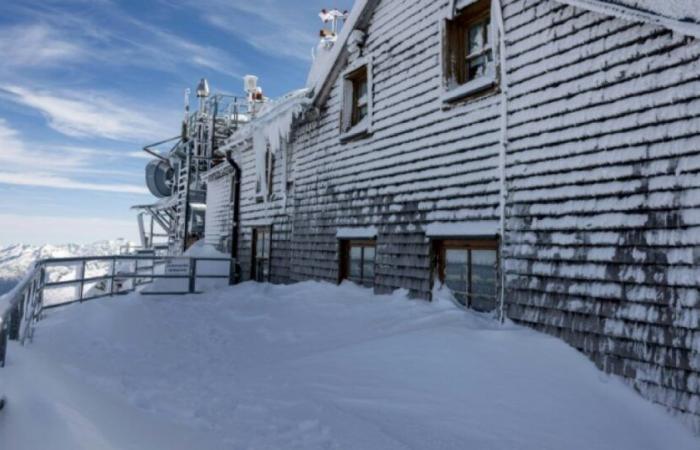“A crack the size of a hand”: at 3,106 meters above sea level, the foundations of the snow-covered Zittel refuge in the Salzburg region are cracking under the effect of global warming.
“There is an urgent need to act,” says Georg Unterberger, responsible for infrastructure at the Austrian Alpine Club.
The sector launched a “distress appeal” a few months ago – which has collected nearly 100,000 signatures to date – demanding an emergency fund of 95 million euros.
But the government has only promised 3 million and in this country of 9.1 million inhabitants where climbing the slopes is a national sport, concern is growing in the face of landslides which damage the refuges, already weakened by their old age. and lack of maintenance.
Across the entire Alps, the melting of glaciers and the thawing of permafrost (permanently frozen ground) make routes to the summits very risky. One of the consequences of climate change, at the heart of COP29 opening Monday in Baku, Azerbaijan.
– “On all fours” –
In Austria, 272 of the 429 mountain huts and 50,000 kilometers of trails require measures and repairs. The economic burden of maintaining the numerous paths “has doubled in the last five years”, Mr. Unterberger told AFP.
Mostly built more than a hundred years ago, three to four chalets close each year.
However, there is no shortage of tourists: there are more than a million of them per year who visit the 200 establishments managed by the Alpine Club alone, the largest in the country with 710,000 members.
The climb to the summit of Sonnblick, coveted by adventurers from all over the world, has always been ranked among the most difficult on the circuit. Now climbing equipment is essential, to have a chance to admire the view from above.
“It’s even more dangerous now and I’ve seen climbers having to get on all fours to get to the top,” says the manager.
The change of scenery requires adjustments, such as the installation of ropes and steel ladders to secure the course and mark its route, changing a little each year depending on erosion.
When the refuge was built, the imposing, pristine glacier licked the walls. Its spectacular retreat has exposed steep rock faces and vast and perilous stretches of grayish scree.
It was necessary to stabilize the summit using steel stakes, driven 20 meters into the stone, heavily reinforced with concrete.
– Lack of volunteers –
And beyond the means, the problem is also human. Unlike neighboring Switzerland, the public authorities are not responsible for maintaining the trail networks in Austria: Alpine clubs rely largely on increasingly rare volunteers.
“Many of our 25,000 volunteers are over 65 and recruitment is a constant challenge,” regrets Georg Unterberger, who observes a trend towards “micro-commitment”, for a few hours or a day, but no more.
Alongside the refuge, the Sonnblick Observatory has documented temperature changes since 1886, making it the longest uninterrupted period of high-altitude data collection in the world.
Crucial information to allow scientists to refine their climate models, as the heights are warming faster than the rest of the globe.
Since the 1950s, all high mountain regions, such as “the Alps, the Rockies, the Andes or the Himalayas, have experienced an annual temperature increase of more than two degrees”, or double the global average, Elke Ludewig, director of the observatory, told AFP. The rise is even stronger at this peak.
“We must not trust the abundant snow and glaciers that we are still lucky enough to see. We are really in a critical situation in terms of the speed at which the planet is warming,” she recalls. .






